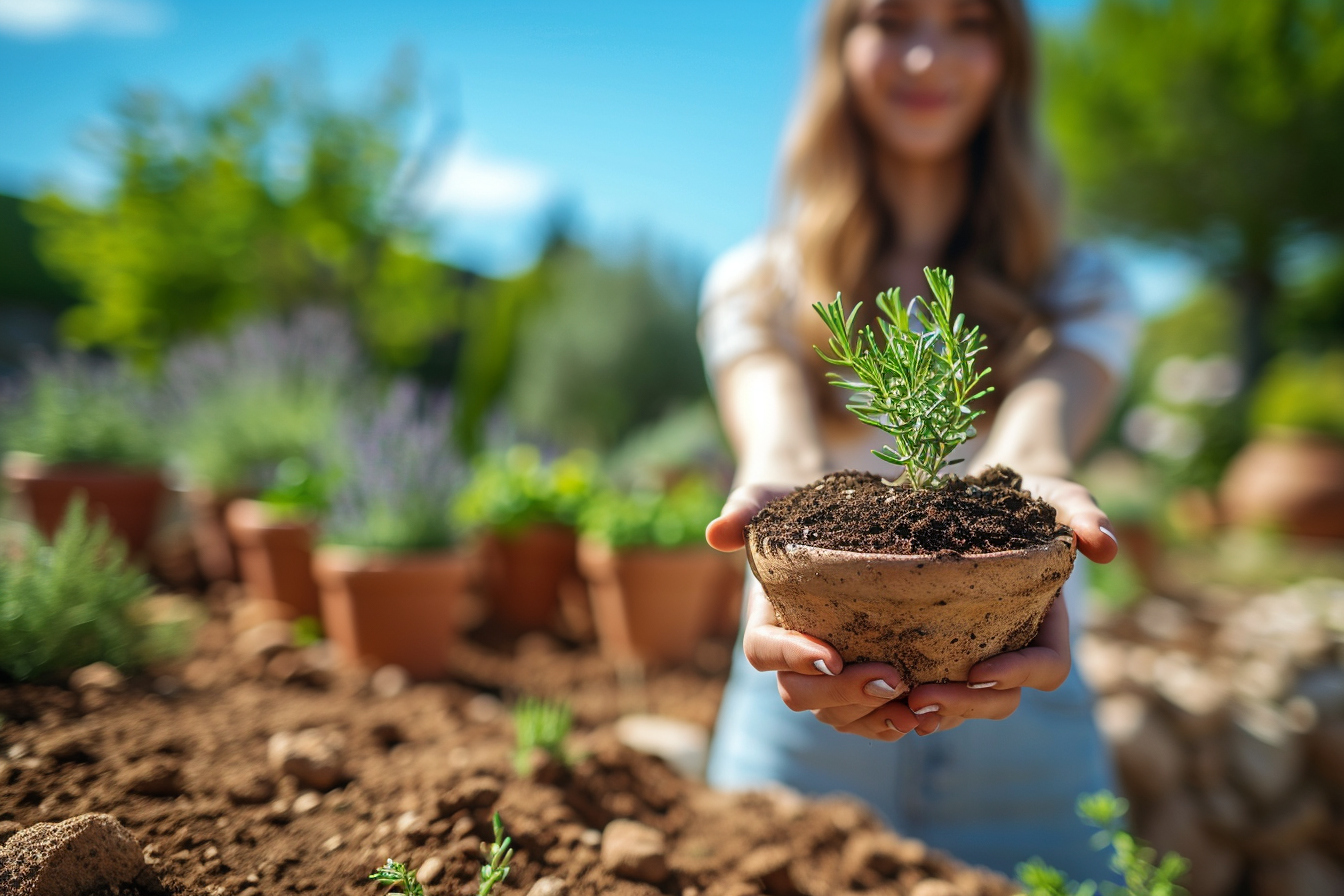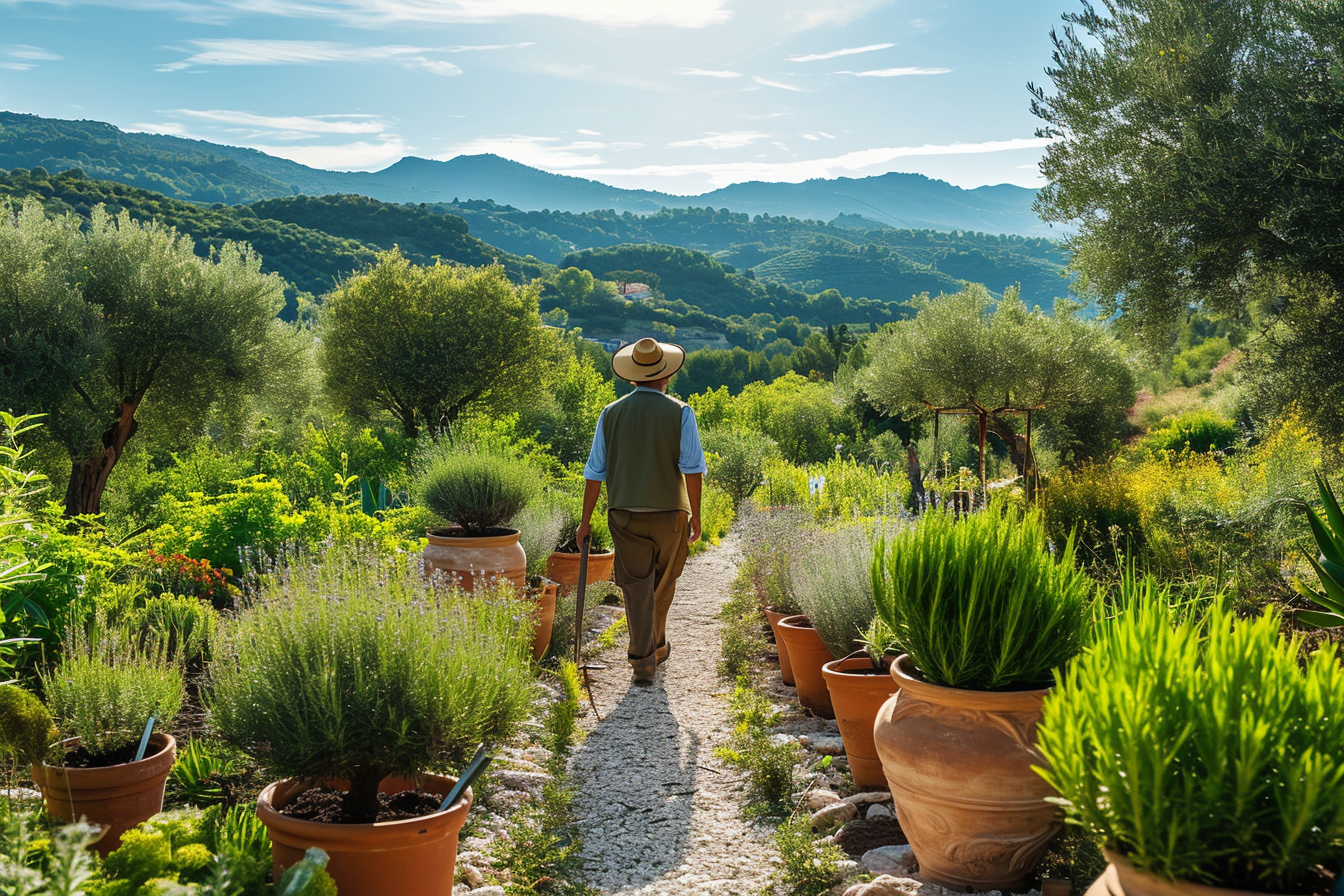The Mediterranean garden is an ode to resilience and beauty in the face of climatic adversity. With its plants adapted to dry conditions and its natural aesthetic, it brings a touch of charm and tranquility. This style of garden favors species that can thrive in hot sun and with little water, but to successfully create it, a methodical and informed approach is essential.
Land selection and layout
The first step in designing a Mediterranean garden is choosing the right location. A sunny space protected from the wind is ideal. The quality of the soil must also be taken into account.
Soil analysis : Well-drained soil is crucial, as standing water can be harmful to Mediterranean plants. If you have clay or compacted soil, consider adding sand and gravel to improve drainage.
Leveling : Creating reliefs can not only enrich the aesthetics of the garden, but also facilitate water management. Gentle slopes allow better distribution of humidity and prevent erosion.
Choice of resistant plants
The cornerstone of a Mediterranean garden is its selection of plants. These must be able to withstand heat while requiring little maintenance.
The bushes : Varieties such as rosemary, bay leaf, and lavender, with their fragrant foliage and limited water requirements, are perfect for garden focal points.
Perennials : Opt for flowers like agapanthus or garden purslane which can flourish under clear skies in summer.
Trees : The cypress, the olive tree or the fig tree provide shade and an interesting vertical structure, in addition to giving an authentic Mediterranean atmosphere.
Irrigation Strategies
One of the major challenges of creating a Mediterranean garden is to manage water supply while minimizing its use.
The drip : It is an effective irrigation technique because it reduces evaporation and delivers water directly to the plant roots.
Mulching : Using organic or mineral materials as a layer on the soil helps conserve moisture, control soil temperature and limit weed growth.
The hydrozone : Group plants according to their water needs to maximize watering efficiency and reduce waste.
Fertilization and maintenance
Although Mediterranean plants are renowned for their ability to thrive with little care, minimal maintenance is necessary to maintain their health and beauty.
Compost : An annual addition of compost is generally sufficient. It enriches the soil and promotes beneficial microbial flora.
The size : It is important for certain species to maintain their shape and encourage flowering. Do it at the right time of year to avoid stressing the plants.
Weeding : Regularly removing weeds promotes the growth of Mediterranean plants by limiting competition for nutrients and water.
Use of local and sustainable materials

The aesthetic of a Mediterranean garden is based on the use of natural materials that integrate harmoniously with the surrounding landscape.
Stone : It is very popular in these gardens for its natural appearance and its ability to retain heat. Think about paving, borders or dry stone walls.
Wood : Used for pergolas or trellises, it adds a warm touch to the garden and provides support for climbing plants.
The water elements : A pond or fountain is not only decorative, but also helps create a cool microclimate, conducive to plant and animal diversity.
Integration of living spaces
Your Mediterranean garden is not only a plant scene, it is also a living space that can be arranged for rest and conviviality.
The alleys : Draw paths that invite you to walk and allow you to explore the garden from different angles.
Rest areas : Set up areas with benches or chairs to sit and admire the garden, or shaded spaces to escape the summer heat.
Dining areas : A terrace or barbecue area fits perfectly into the warm and friendly atmosphere of the Mediterranean garden.
Lighting : Solar or LED lights can extend the enjoyment of the garden after sunset and accentuate the beauty of plants and structures.
Successfully creating a Mediterranean garden relies on the harmonization between plants resistant to hot climates, clever water management, the use of natural materials and the creation of integrated living spaces. This type of garden, if well designed, will provide a green sanctuary that requires little maintenance, while being rich in colors and scents. It is the reflection of a nature that is controlled, but also respected, offering a haven of peace and a source of wonder throughout the seasons.












